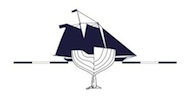For quite some time now, the size of the AC72 is subject of recurrent criticisms: huge size, maneuverability delicate if not dangerous, tremendous costs, and so on.
By François Chevalier & Jacques Taglang.
Though we would prefer to avoid argument on terminology, few clarifications should be made:
The AC72 (catamaran of 72’ LOA) is only 2 feet longer than the MOD70 (MultiOneDesign 70 – trimaran of 70’ LOA). We must note that to date 7 teams have announced they will race the 2012 season.
Of course, the air draught of the AC72 is 131.23’ high to be compared to the 95.15’ of the MOD70. But this has nothing to do with the excessiveness of Oracle USA-17, the 2010 winner of the Cup, its very top emerging at 223’, that means 91.86’ beyond the one of the future AC72.
Of course, the air draught of the AC72 is 131.23’ high to be compared to the 95.15’ of the MOD70. But this has nothing to do with the excessiveness of Oracle USA-17, the 2010 winner of the Cup, its very top emerging at 223’, that means 91.86’ beyond the one of the future AC72.
But let’s go back to the air draught of the AC72. So we have to look at the evidence: the race course of the America’s Cup is close to the coast, in front of a race committee deciding at its sole discretion if the race can be sailed or not. On the opposite the sail plan of the MOD70 has been adapted in order to provide more safety when ocean sailing. For more safety it has been reduced by 5% regarding the trimaran ORMA60 (100’ of air draught)! (Have a look on the yellow doted lines on the drawing of the Gitana XII sail plan and the drawing of Artemis wingsail in the news dated of last March 30th and April 1st).
The America’s Cup has always been a competition for yachtsmen’s elite. The eleven crewmembers aboard the AC72 will have a lot to do! However the wingsail trim – technically demanding – should be kept out of their reach as soon as they will have mastered it (on that point the AC45 is more than a gadget!)
With the help of the economic crisis – in the thirties the America’s Cup was affected by the economic crisis (that didn’t prevent the advent of the J Class) then, it was also the case in the post war times (the advent of the 12 Meter in 1958) – all the teams will look for a constant cost control. The agreement between Oracle (USA) and Energy Team (FRA) is an excellent example.
 |
| ©François Chevalier
Depuis quelques temps déjà, le format des AC72 fait l’objet de critiques récurrentes : gigantisme outré, manœuvrabilité discutable voire dangereuse, coûts exorbitants, etc.
|
Par François Chevalier & Jacques Taglang.
Sans vouloir entrer dans la polémique, il n’est pas inutile d’apporter quelques précisions :
Sans vouloir entrer dans la polémique, il n’est pas inutile d’apporter quelques précisions :
L’AC72 (catamaran de 22 m hors tout) ne mesure que 61 cm de plus que les MOD70 (MultiOneDesign 70 – trimaran de 21,20 m de longueur hors tout). A noter que, pour le moment, 7 équipes se sont annoncées pour disputer la saison 2012.
Certes, le tirant d’air de l’AC72 affiche 40 m contre 29 m au MOD70. Mais cela n’a rien à voir avec la démesure d’Oracle USA-17 le vainqueur de 2010 qui pointe le haut de son mât à 68 m soit 28 m au-delà de celui du futur AC72 !
Mais revenons au tirant d’air de l’AC72. Il faut se rendre à l’évidence : l’America’s Cup se dispute selon un circuit côtier, devant un jury de course qui maîtrise à tout moment la décision de donner ou non le départ d’une régate, voire de l’annuler si les conditions météo empirent durant l’épreuve. A l’inverse, le plan de voilure du MOD70 est adapté à un programme océanique. Pour plus de sécurité, il a été réduit de 5% par rapport aux trimarans ORMA60 (30,48 m de tirant d’air) ! (Voir le pointillé jaune de la voilure de Gitana XII sur le dessin de l’aile d’Artemis dans les news du 30 mars et du 1er avril dernier).
Depuis toujours, l’America’s Cup est une épreuve ouverte à l’élite des régatiers. Les onze hommes d’équipage auront beaucoup à faire à bord de l’AC72. Toutefois, la manœuvre de l’aile – exigeante et technique – restera à leur portée dès lors qu’ils en auront acquis la maîtrise et que les préliminaires à bord des AC45 sont plus qu'appropriés !
Crise économique aidant – une situation que l’America’s Cup a déjà connue dans les années trente (cela n’a pas empêché l’avènement des J Class) puis, dans les années d’après guerre (entrée des 12 Mètre JI en 1958) – la crise économique donc, induira obligatoirement la recherche permanente de la maîtrises des coûts. L’accord passé entre Oracle (USA) et Energy Team (FRA) en est un bel exemple.


Aucun commentaire:
Enregistrer un commentaire